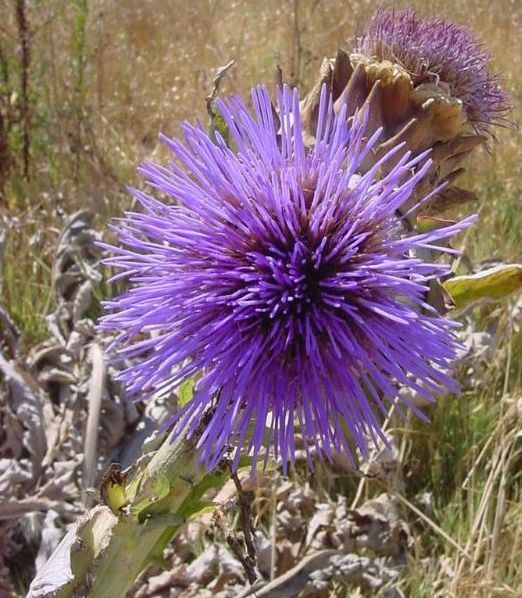Cardoons Thistle be a good Plant
Plants of the thistle family and close relatives are particularly good for wildlife. When in flower they attract Bees and Insects and the fine seeds provide bird food particularly for Goldfinches. In many cases the Thistles can and have provided food and medicine for human consumption.
Cirsium Vulgare and Common Thistle
These plants are hardy and the flowers, leaves, root, seed and stem are all edible. The root is best mixed with other vegetable due to it’s bland taste, leaves and young flower stems can be removed of prickles, cooked and used as vegetables. The stem base of the flower buds can be used like the heart of a globe artichoke. The seeds of milk thistle have been used for 2000 years to treat chronic liver disease and protect the liver against toxins.
Cirsium rivulare Atropurpureum is popular with gardeners as it flowers 4-5 feet tall. It has spreading roots and the flower heads should be cut off before being allowed to seed unless you are feeding birds and prepared to weed. ‘Atropurpureum’ is a tall statuesque plant that is perfect for the back of the herbaceous border. It produces elegant, long, leafless stems, each topped with a huge magenta-pink thistle head.
Cardoons
A perennial plant of the Cynara family they are an old favourite. Originally grown as a vegetable and blanched for use rather like celery, the cardoon is now valued for its striking silvery, thistle-like foliage which adds a theatrical touch to the border. In summer, tall flower stems are topped by fat thistle buds which resemble small globe artichokes. The buds open into large purple thistles which attract lots of bees. The dead flower-heads can be left on the plants and will provide an attractive feature over the winter months.
